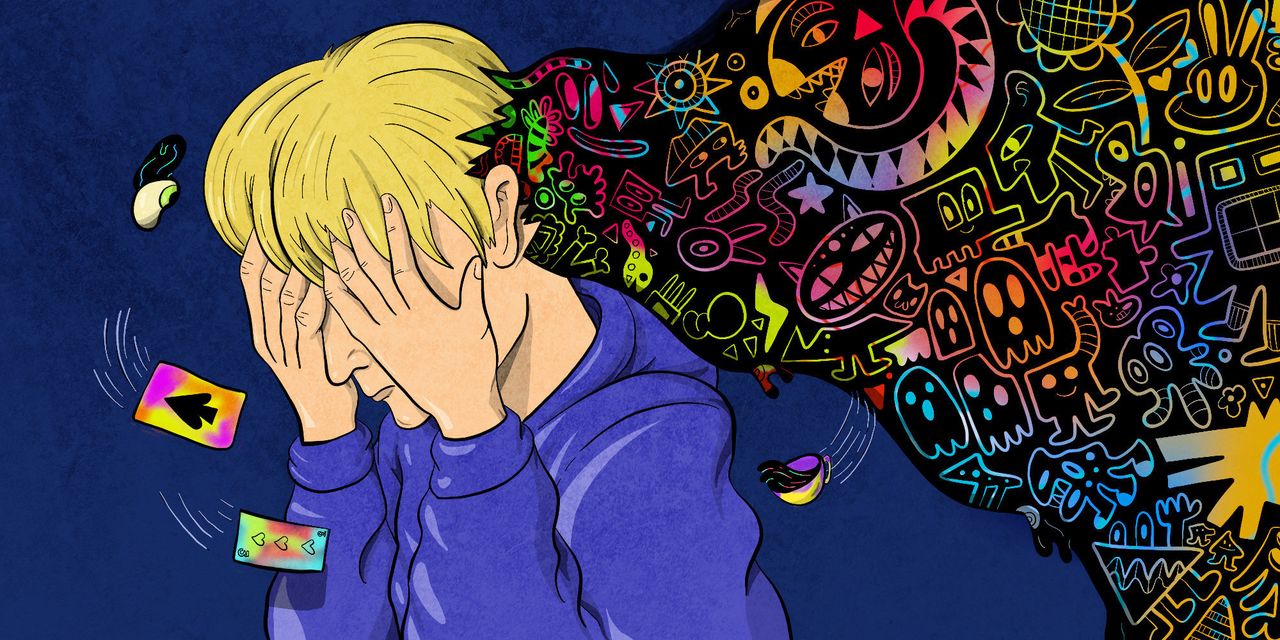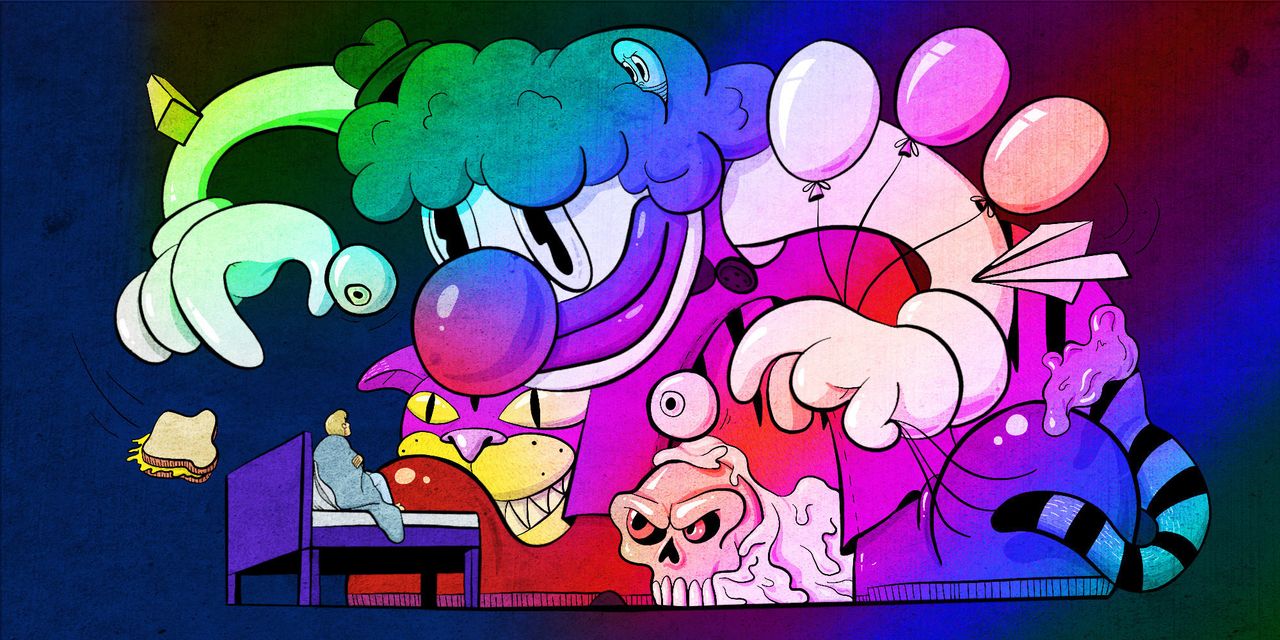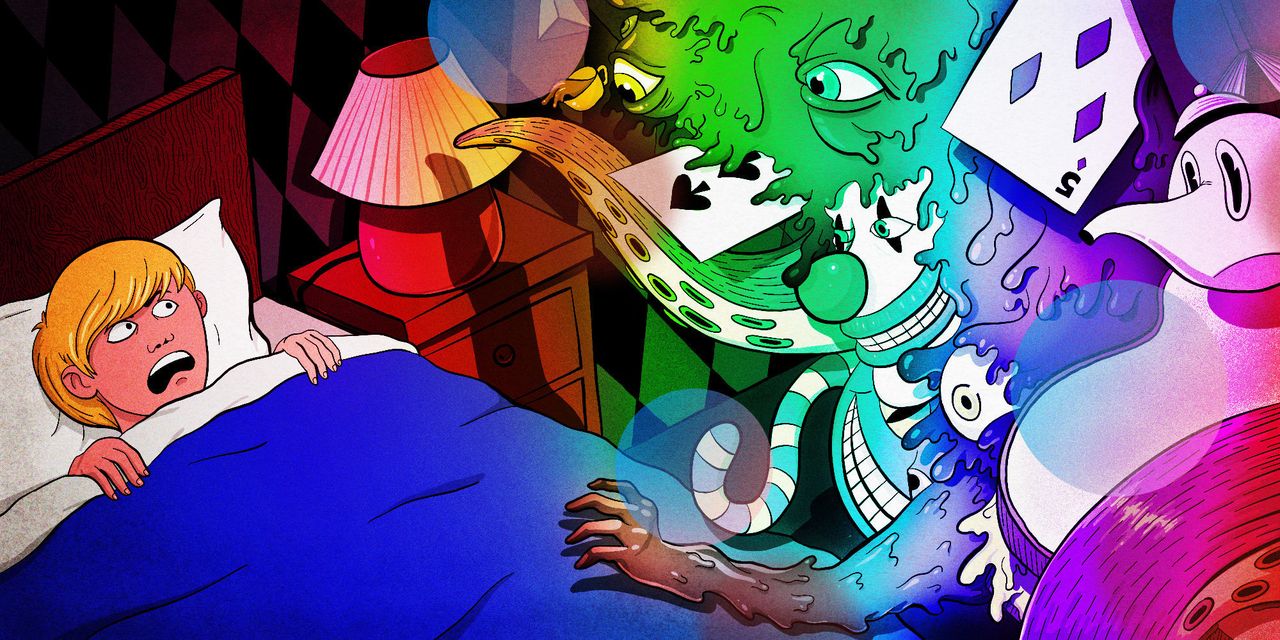The first time I saw one of my monsters, I was in my early 30s.
A few weeks earlier, a burst of eye floaters, sparkles and squiggly lines filled my visual fields. Not only was I becoming sick ― experiencing nausea, stomach pain, loss of vision and extreme fatigue ― I was also worrying about my mental stability.
My first monster was quick! He was large and extremely colorful. He disappeared within one second. “Am I dreaming?” I wondered after seeing him.
However, every night following that first hallucination, many other colorful figures, geometric shapes, and even creatures that looked like toys filled my dark bedroom. And, without fail, every morning following those late-night parades of demented Disney-like characters, I awoke to incredible head and stomach pain.
At first, I kept quiet about my strange visions and the resulting pain. But after eventually missing several days of work due to what I was experiencing, I attempted to tell my primary care physician what was happening.
But how do you tell an extremely intelligent, well-respected doctor you’ve been seeing large pieces of flying cheese toast, decks of red, black and white playing cards, a 10-foot tall clown and a yodeling Mr. Potato Head toy racing by in a jet!
“How do you tell an extremely intelligent, well-respected doctor you’ve been seeing large pieces of flying cheese toast, decks of red, black and white playing cards, a 10-foot-tall clown and a yodeling Mr. Potato Head toy racing by in a jet!”
Luckily, my doctor didn’t jump to any conclusions, and didn’t immediately write me off as mentally ill. He believed that what I was experiencing was due to intense migraine headaches. I was confused and not truly convinced by his diagnosis ― how could a migraine cause me to see the things I was seeing?
My condition soon became life-changing, and I was no longer the free spirit who longed for adventure and went almost anywhere people asked me to go. I felt like just a shell of who I used to be. I was never one to miss work, and was proud of being an “Apple Corp Teacher” (teacher of the year) in my school. Suddenly, I was not only missing a few days a week, I was not going to work at all.
I underwent numerous head scans, medications, and biofeedback procedures without much relief. The pain and bizarre visions continued. With no cure, I was eventually sent to an epilepsy lab in Dallas for testing.
I felt like Alice in Wonderland, but the strange land that I was lost in was the real world, now full of creatures and characters that I knew didn’t ― and couldn’t! ― really exist. And, like Alice, I began to wonder if I was, to put it crassly, simply bonkers. The doctors from the epilepsy unit obviously wondered that, too, and they sent me to the University of Texas Southwestern Medical School to visit a psychiatrist.
The psychiatrist told me I did not need to see him ― I wasn’t mentally ill. Instead, he reemphasized what my original doctor had told me: I needed specialists who dealt with severe forms of migraine headaches and the symptoms and syndromes that can accompany them.
I continued my tour of specialists. When I described how I would see the room I was in filled with small jets or black and red static ― or how sometimes I would look at my legs and they would appear to me to be so enlarged they looked like they belonged to an elephant ― I was worried I’d be told, once again, there was nothing that could be done for me.

Instead, I was ecstatic to be diagnosed with a rare and puzzling condition known as Alice in Wonderland syndrome, also known as Todd’s syndrome, which can cause objects to appear smaller, bigger, closer or farther away than they really are. The syndrome also can cause strong hallucinations in some individuals, like me.
Finally, I had found a name for what had been haunting me all of those years.
Lewis Carroll, writer, teacher and author of Alice in Wonderland, is actually believed to have suffered from this rare condition himself. In his beloved children’s book, Alice becomes large (macropsia, a condition associated with Alice in Wonderland syndrome that causes people to see things as larger than they actually are) and tiny (micropsia, a condition associated with the syndrome that causes people to see things as smaller than they actually are), and experiences many strange characters during her wild journey through Wonderland. Carroll’s journals frequently mention extreme head pain and the fact that on many days he didn’t feel quite himself.
“I learned to keep quiet about what I was experiencing and to just slap a smile on my face and pretend I was OK. It was easier than the alternative. So, you can imagine my relief when I learned that what I have is real.”
It took 25 years from when I saw my first monster to be accurately diagnosed. For all of that time, I felt like I was being blamed for my condition, and there were so many occasions when people refused to believe that I was even sick. I can’t tell you how many times someone said, “You don’t look sick” or “What you’re describing can’t be real” or, on the rare days I didn’t have to cancel a meeting with a friend or family member, “Well, look who decided to finally show up!”
I learned to keep quiet about what I was experiencing and to just slap a smile on my face and pretend I was OK. It was easier than the alternative. So, you can imagine my relief when I learned that what I have is real.

Now, when I’m forced to turn down events, I no longer feel bad about it because I know there’s a real reason I’m stuck doing so. I feel justified taking care of myself and prioritizing my health.
I continue to see doctors from UT Southwestern Medical School to treat my Alice in Wonderland syndrome. In the past month, I’ve received 31 shots of Botox for pain, as well as magnesium, riboflavin and Maxalt to help combat this strange and painful syndrome. There are days when I still am afflicted by my condition, but now I simply remind myself that it’s the syndrome that is creating havoc in my life.
Advocating for yourself – especially when you’re experiencing something that no one else understands or can see – is scary and isolating. But you need to do it, because no one else is going to do it for you. Whether you think you might have Alice in Wonderland syndrome or some other slippery condition that isn’t easily diagnosed, keep speaking up. See as many doctors as you can. Get second and third and fourth opinions. Hopefully, at some point, like me, you’ll find someone who believes you and can help you reclaim your life.
Do you have a personal story you’d like to see published on HuffPost? Find out what we’re looking for here and send us a pitch!
